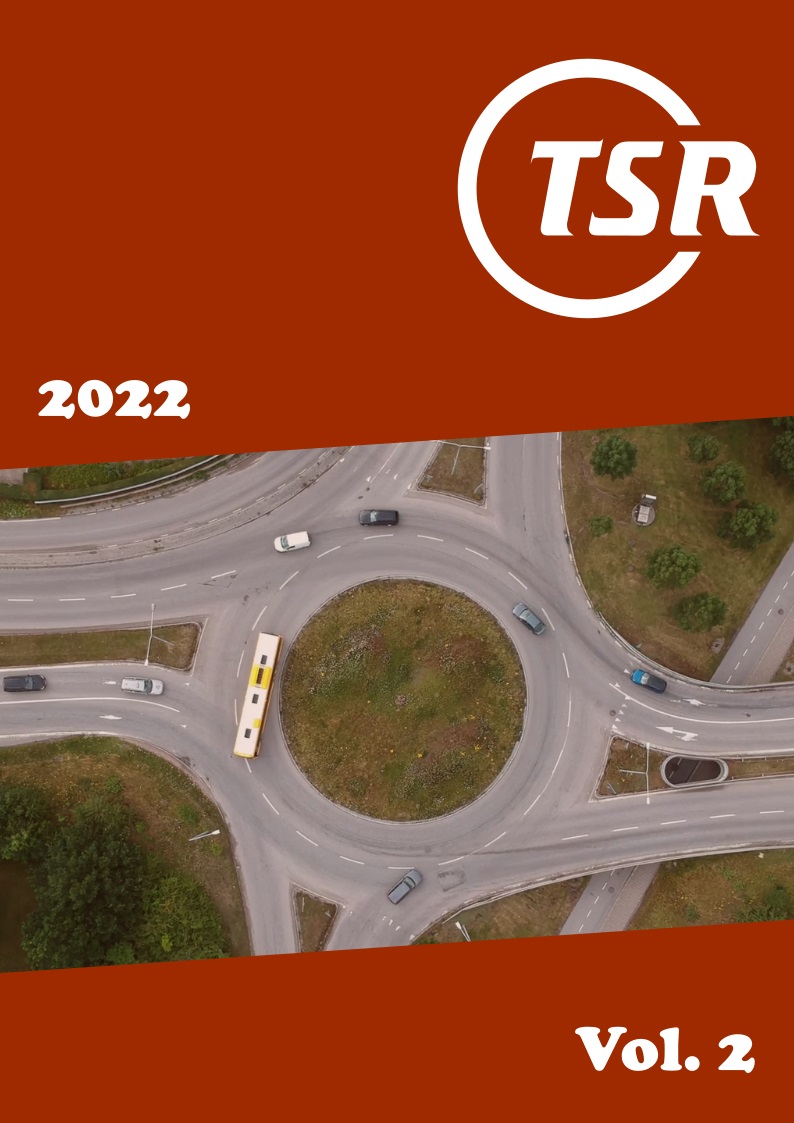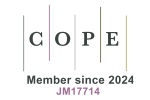Factors contributing to the decline in the number of heavy goods vehicles involved in injury accidents in Norway from 2007 to 2020
DOI:
https://doi.org/10.55329/doiy5780Keywords:
accidents, contributing factor, decline, heavy goods vehicleAbstract
There has been a large decline in the number of police reported injury accidents on public roads in Norway after 2007. The decline has been particularly large for accidents involving heavy goods vehicles. From 2007 to 2020, the number of heavy goods vehicles involved in injury accidents declined by 68%. The total number of injury accidents declined by 56%. The study presented in this paper aimed to identify factors explaining the decline from 2007 to 2020 in the number of heavy goods vehicles involved in injury accidents in Norway. This is done by reconstructing annual changes in factors known to influence the number of accidents and estimating the potential impacts of changes in these factors. The factors identified can only be regarded as potential causes, as the study design does not permit causal inferences. In total, 14 factors were identified. For 12 factors numerical estimates of the contributions to the declining trend were developed. The combined contribution of all factors accounted for 32.6%–37.5% of the decline in the number of heavy vehicles involved in injury accidents. More than 60% of the decline is not accounted for and must have been caused by factors not included in this study.
Downloads
References
Bjørnskau, T., T.-O. Nævestad (2012), ‘How Can the Safety Culture Perspective be Applied to Road Traffic?’, Transport Reviews, 32 (2), 139–154, https://doi.org/10.1080/01441647.2011.628131.
Bjørnskau, T. (2020), ‘Risiko i veitrafikken 2017/18’ [Road traffic risk in Norway 2017/18] (Oslo, Norway: Institute of Transport Economics), TØI rapport 1782/2020, https://www.toi.no/getfile.php?mmfileid=54458, accessed 11 December 2022.
Carlsson, A. (2009), ‘Uppföljning mötesfria vägar: slutrapport’ [Evaluation of 2+1 roads with cable barriers] (Linköping, Sweden: Swedish National Road and Transport Research Institute), VTI rapport 636, https://www.diva-portal.org/smash/get/diva2:670551/FULLTEXT01.pdf, accessed 12 December 2022.
Elvik, R. (2009), ‘An exploratory analysis of models for estimating the combined effects of road safety measures’, Accident Analysis & Prevention, 41 (4), 876–880, https://doi.org/10.1016/j.aap.2009.05.003.
Elvik, R. (2011), ‘Assessing causality in multivariate accident models’, Accident Analysis & Prevention, 43 (1), 253–264, https://doi.org/10.1016/j.aap.2010.08.018.
Elvik, R., H. Ulstein, K. Wifstad, et al. (2017), ‘An Empirical Bayes before-after evaluation of road safety effects of a new motorway in Norway’, Accident Analysis & Prevention, 108, 285–296, https://doi.org/10.1016/j.aap.2017.09.014.
Elvik, R. (2019), ‘A comprehensive and unified framework for analysing the effects on injuries of measures influencing speed’, Accident Analysis & Prevention, 125, 63–69, https://doi.org/10.1016/j.aap.2019.01.033.
Elvik, R., A. K. Høye (2021), ‘Hva forklarer nedgangen i antall drepte eller hardt skadde i trafikken etter 2000?: En oppdatering’ [What explains the decline in number of killed or hard injured in traffic after 2000?: An update] (Oslo, Norway: Institute of Transport Economics), TØI rapport 1816/2021, https://www.toi.no/getfile.php?mmfileid=55883, accessed 11 December 2022.
Elvik, R. (2022), ‘Effects on accidents of technical inspections of heavy goods vehicles in Norway: A re-analysis and a replication’, Journal of Safety Research, https://doi.org/10.1016/j.jsr.2022.10.021.
Elvik, R., L. Tanum Pasnin, T.-O. Nævestad (2022), ‘Effects on accidents of police checks of drivers of heavy goods vehicles in Norway’, Transportation Research Interdisciplinary Perspectives, 14, 100606, https://doi.org/10.1016/j.trip.2022.100606.
European Commission (2018), ‘Monitoring Road Safety in the EU: towards a comprehensive set of Safety Performance Indicators’, https://road-safety.transport.ec.europa.eu/system/files/2021-07/ersosynthesis2018-performanceindicators.pdf, accessed 12 December 2022.
Fridstrøm, L. (1999), ‘Econometric models of road use, accidents, and road investment decisions ’ (Oslo, Norway: Institute of Transport Economics), TØI rapport 457/1999, https://www.toi.no/getfile.php?mmfileid=6030, accessed 11 December 2022.
Førland, T. E. (2013), ‘Årsaksproblemer i historisk forskning’ [Problems of Causation in Historical Research], Tidsskrift for samfunnsforskning, 54 (3), 355–370, https://doi.org/10.18261/issn1504-291x-2013-03-05.
Hovi, I. B., E. Caspersen, P. B. Wangsness (2014), ‘Godstransportmarkedets sammensetning og utvikling’ [The freight transport market composition and development] (Oslo, Norway: Institute of Transport Economics), TØI rapport 1363/2014, https://www.toi.no/getfile.php?mmfileid=39223, accessed 11 December 2022.
Høye, A. (2015a), ‘Forsterket og profilert midtoppmerking. Kapittel 3.26 i Trafikksikkerhetshåndboken. ’ [Reinforced and profiled center marking. Chapter 3.26 in the Traffic Safety Handbook.] (Oslo, Norway: Institute of Transport Economics), https://www.tshandbok.no/del-2/3-trafikkregulering/326-forsterket-midtoppmerking/, accessed 11 December 2022.
Høye, A. (2015b), ‘Autonom avstandsregulering, kollisjonsvarsling og automatisk nødbrems. Kapittel 4.18 i Trafikksikkerhetshåndboken.’ [Autonomous distance control, collision warning and automatic emergency braking. Chapter 4.18 in the Traffic Safety Handbook.] (Oslo, Norway: Institute of Transport Economics), https://www.tshandbok.no/del-2/4-kjoeretoeyteknikk-og-personlig-verneutstyr/doc690/, accessed 11 December 2022.
Høye, A. (2015c), ‘Safety effects of fixed speed cameras—An empirical Bayes evaluation’, Accident Analysis & Prevention, 82, 263–269, https://doi.org/10.1016/j.aap.2015.06.001.
Høye, A. (2015d), ‘Safety effects of section control - An empirical Bayes evaluation’, Accident Analysis & Prevention, 74, 169–178, https://doi.org/10.1016/j.aap.2014.10.016.
Høye, A. (2016), ‘Utvikling av ulykkesmodeller for ulykker på riks- og fylkesveger i Norge (2010-2015)’ [Development of accident models for accidents on the national and county road network in Norway (2010-2015)] (Oslo, Norway: Institute of Transport Economics), TØI rapport 1522/2016, https://www.toi.no/getfile.php/1344942-1494242006/Publikasjoner/T%C3%98I%20rapporter/2016/1522-2016/1522-2016_Sammendrag.pdf, accessed 11 December 2022.
Macintyre, A. (1976), Causality and History: Essays on Explanation and Understanding. Studies in the Foundations of Humanities and Social Sciences (Dordrecht ,Holland, Boston , USA D. Reidel Publishing Company), https://link.springer.com/chapter/10.1007/978-94-010-1823-4_8, accessed 11 December 2022.
Nævestad, T.-O. (2010), ‘Cultures, crises and campaigns: examining the role of safety culture in the management of hazards in a high risk industry’, PhD thesis, University of Oslo, Centre for Technology, Innovation and Culture, Faculty of Social Sciences.
Nævestad, T.-O., R. Phillips, I. Hovi (2017), ‘Internationalisation in Road Transport of Goods in Norway: Safety Outcomes, Risk Factors and Policy Implications’, Safety, 3 (4), 22, https://doi.org/10.3390/safety3040022.
Nævestad, T.-O. (2020), ‘Økonomisk kjøring som trafikksikkerhetstiltak: Før-og etter studie av tre bedrifter’ [Economical driving as traffic safety measures: Before and after study of three companies] (Oslo, Norway: Institute of Transport Economics), TØI rapport 1813/2020, https://www.toi.no/getfile.php?mmfileid=56562, accessed 11 December 2022.
Nævestad, T.-O., J. Blom, R. O. Phillips (2020), ‘Safety culture, safety management and accident risk in trucking companies’, Transportation Research Part F: Traffic Psychology and Behaviour, 73, 325–347, https://doi.org/10.1016/j.trf.2020.07.001.
Nævestad, T.-O., I. B. Hovi (2020), ‘Ulykkesrisikoen til norske og utenlandske tunge godsbiler i Norge’ [The accident risk to Norwegians and foreign tongue goods vehicles in Norway] (Oslo, Norway: Institute of Transport Economics), TØI rapport 1801/2020, https://www.toi.no/getfile.php?mmfileid=54467, accessed 11 December 2022.
Nævestad, T.-O. (2022), ‘Eco driving as a road safety measure: Before and after study of three companies’, Transportation Research Part F: Traffic Psychology and Behaviour, 91, 95–115, https://doi.org/10.1016/j.trf.2022.09.012.
NHTSA (2019), ‘Large Trucks. 2017 Data: Traffic Safety Facts’ (Washington, DC, USA: National Highway Traffic Safety Administration ), https://crashstats.nhtsa.dot.gov/Api/Public/ViewPublication/812663, accessed 11 December 2022.
Rodrigue, J.-P. (2020), The Geography of Transport Systems (London: Routledge) 5th Edition, https://doi.org/10.4324/9780429346323.
Selvik, J. T., R. Elvik, E. B. Abrahamsen (2020), ‘Can the use of road safety measures on national roads in Norway be interpreted as an informal application of the ALARP principle?’, Accident Analysis & Prevention, 135, 105363, https://doi.org/10.1016/j.aap.2019.105363.
Teoh, E. R., D. L. Carter, S. Smith, A. T. McCartt (2017), ‘Crash risk factors for interstate large trucks in North Carolina’, Journal of Safety Research, 62, 13–21, https://doi.org/10.1016/j.jsr.2017.05.002.
Downloads
Published
How to Cite
Issue
Section
License
Copyright (c) 2022 Rune Elvik, Tor-Olav Nævestad, Fridulv Sagberg, Ingeborg Storesund Hesjevoll, Inger Beate Hovi

This work is licensed under a Creative Commons Attribution 4.0 International License.












